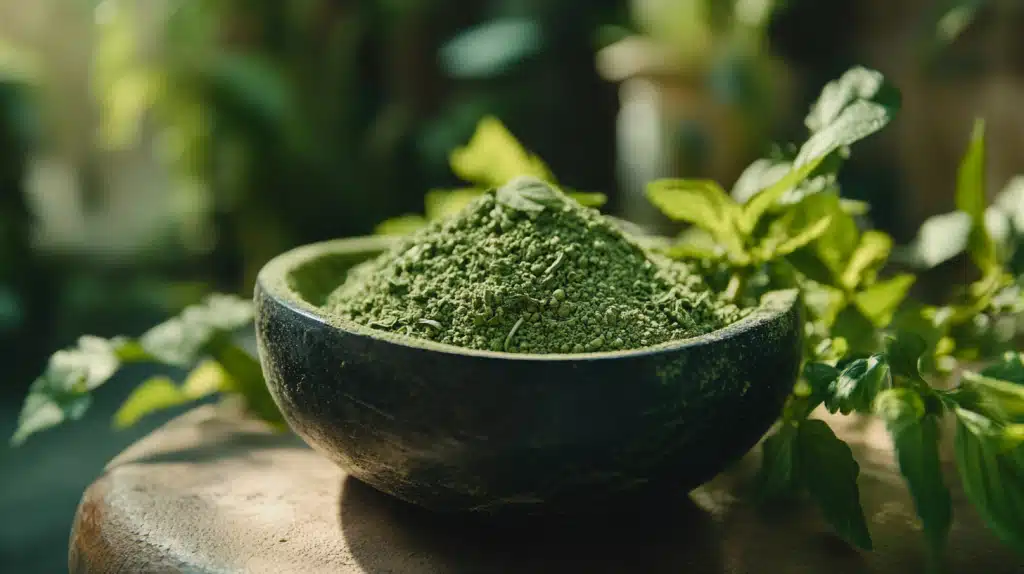Kratom comes from the leaves of Mitragyna speciosa, a tree found in Southeast Asia. For hundreds of years, people in Malaysia and Thailand have used it for energy, pain relief, and easing symptoms from illness. Today, kratom use has reached the United States, mainly among people looking for alternatives to opioids.
Kratom Usage
In multiple surveys, users report turning to kratom to reduce reliance on prescription painkillers. A study from Malaysia found that 84% of long-term kratom users used it for opioid withdrawal, and 90% said it helped. In the U.S., survey data with over 20,000 responses showed that nearly half of users had reduced or stopped opioid use with kratom. Many also reported relief from pain, anxiety, and depression.
Reddit and YouTube feedback confirms the trend. An analysis of 500 kratom-related YouTube videos showed that over 83% of people used it for opioid dependency and 75% for pain. More than half of these posts described positive results. However, some noted downsides like withdrawal symptoms, nausea, headaches, and tiredness. Some users reported long-term dependency.
Federal Approval
Despite user claims, kratom has not been approved for medical use. The U.S. Food and Drug Administration flagged it in 2017 due to safety concerns. The agency says that mitragynine and 7-hydroxymitragynine, the main compounds in kratom, strongly bind to opioid receptors, similar to how morphine works. Mitragynine is dominant and appears less addictive in early lab studies. In rodents, it reduced heroin cravings and did not cause serious breathing problems. However, the other active compound, 7-hydroxymitragynine, is more potent and has shown signs of being habit-forming.
The number of deaths linked to kratom remains low compared to opioids. From 2010–2016, 44 kratom-related fatalities were reported. In the same period, opioids were linked to over 200,000 deaths. Still, health authorities warn that kratom can cause seizures, liver injury, and heart rhythm problems. In one 2021 case, a person developed liver inflammation and opioid withdrawal symptoms after taking kratom with naltrexone.
Commercial Products and Formulation Variables
Kratom is available in many forms, from raw powder to encapsulated extracts and convenience-focused edibles. Some users report different effects depending on the format, with capsules often noted for slower onset and extracts for higher potency. Among newer options, Kratom gummies are mentioned along with tinctures and chewable tablets in user reviews, particularly for their ease of use and measured dosing.
However, labeling across these products is inconsistent. A 2023 review found variations in mitragynine content ranging by 15-fold between products, even among samples labeled with the same strain name. This unpredictability is key to understanding dosage-related outcomes.
Effects and Usage
From a biological standpoint, kratom has stimulant effects in low doses and sedative effects in higher doses. These responses relate to how it interacts with serotonin and adrenergic systems. Studies show a half-life of about 23 hours in humans, with peak effects around one hour after taking it. However, the way people respond can vary, especially depending on dosage and metabolic differences.
Animal lab results show that mitragynine may have lower abuse potential than traditional opioids. In several studies, rats given kratom chose it less often than oxycodone. Mitragynine also appears to reduce reward-related brain activity following methamphetamine use. These findings support the idea that kratom might help reduce cravings for other substances, but results in animals don’t always translate to humans.
So far, no large-scale trials have been done in people, which limits how much doctors can rely on the findings. Much of the positive data comes from self-reported surveys, which are helpful but easy to bias. Most clinical research consists of small sampling or case reports. Some have shown elevated liver enzymes or heart rhythm changes in people using large amounts of kratom.
What People Are Saying About Kratom
Users often say they prefer kratom over methadone or buprenorphine because it costs less and doesn’t require prescriptions. Some Reddit posters compared kratom costs of $120 per month to over $600 for standard medication-assisted opioid treatments. But person-to-person reports vary widely. Some people mention needing more kratom over time to get the same results. Others say they feel worse when they stop, describing muscle cramps, restlessness, cold flashes, and anxiety.
Though some in the scientific community are exploring kratom’s potential to help with pain or withdrawal, experts agree on one concern: the lack of product quality control. Independent lab tests in 2023 found contamination in nearly one-third of commercial kratom products. Heavy metals, bacteria, and unpredictable alkaloid levels are common. Without regulation, these risks remain a barrier.
Medical groups remain cautious. While a few addiction specialists support limited use under supervised care, others point out the risk of normalization without quality studies. So far, no official body has endorsed kratom for medical use. Researchers continue to push for controlled clinical trials to sort out its exact safety profile, best dose ranges, and risks when combined with other drugs. Until that happens, the use of kratom remains unstandardized and unregulated.




















